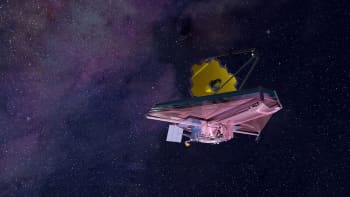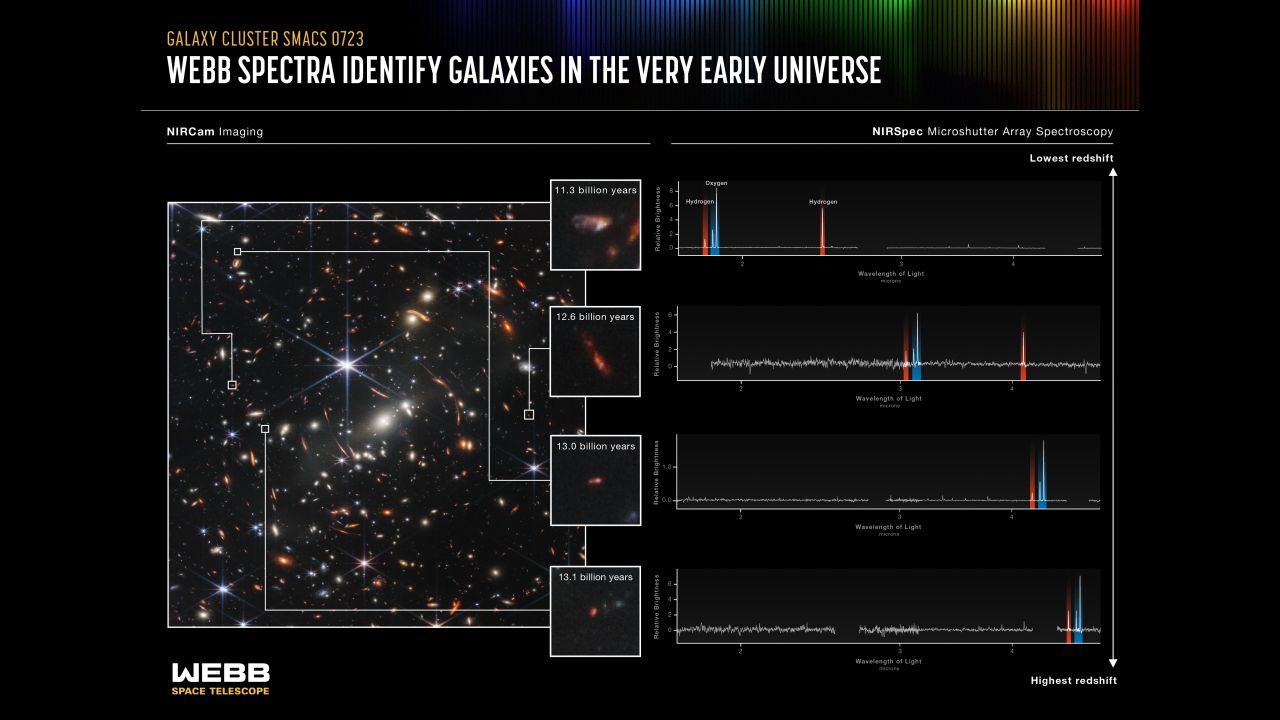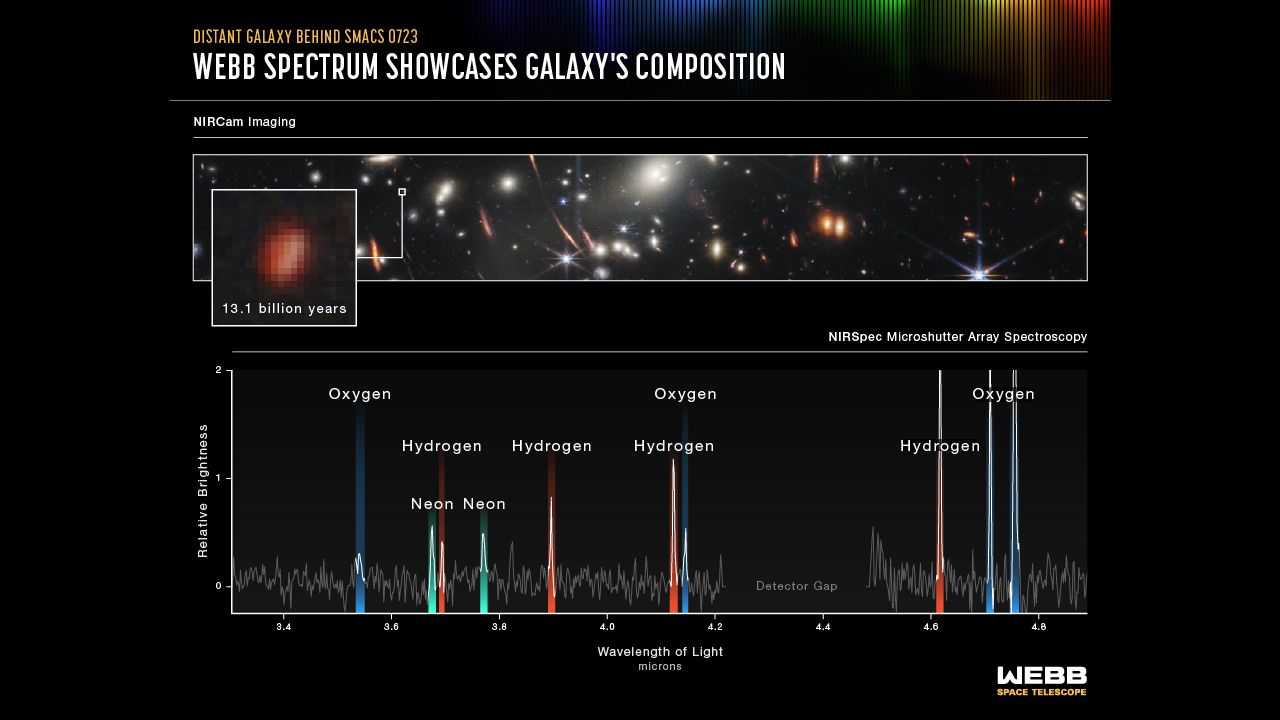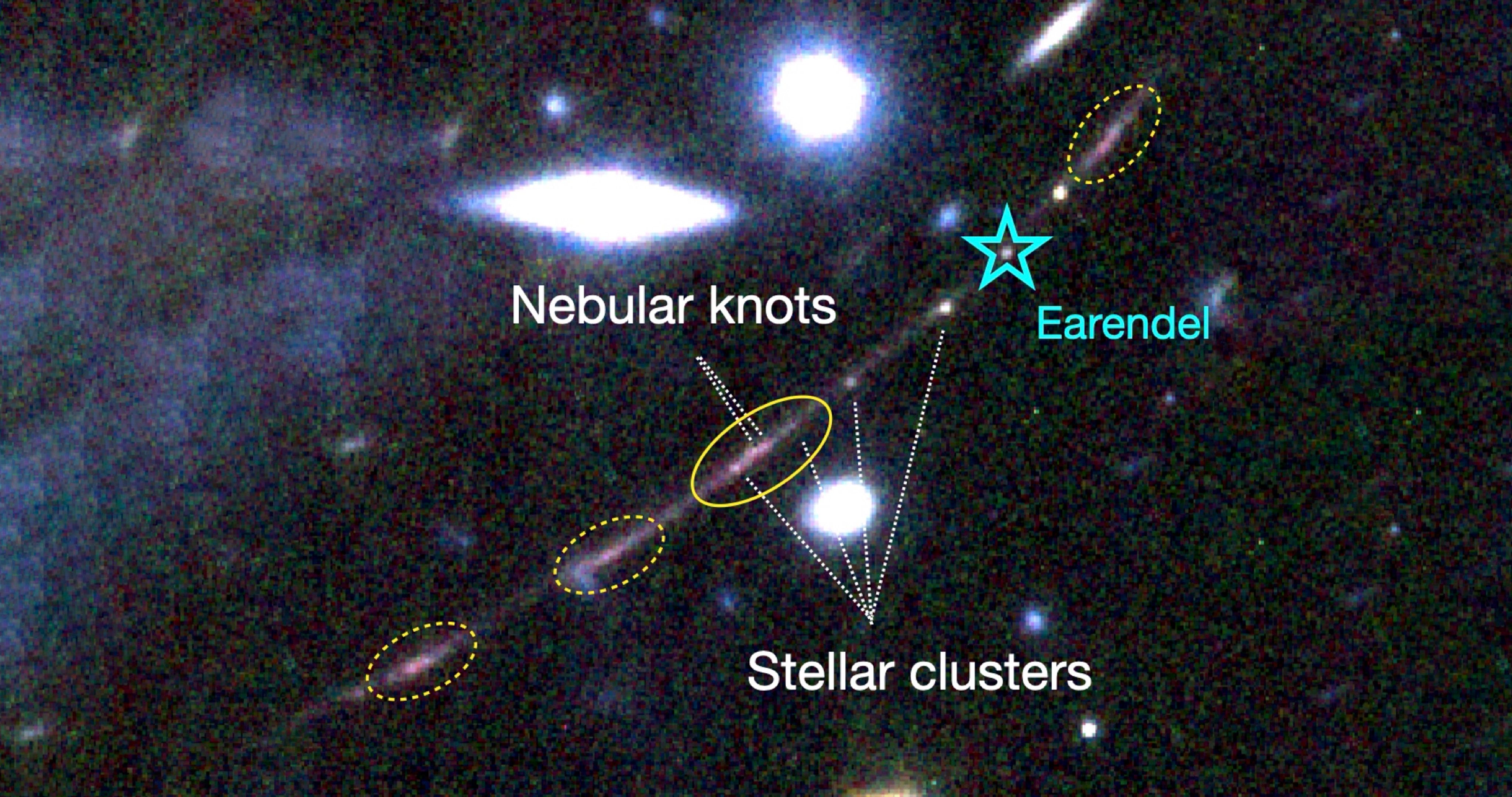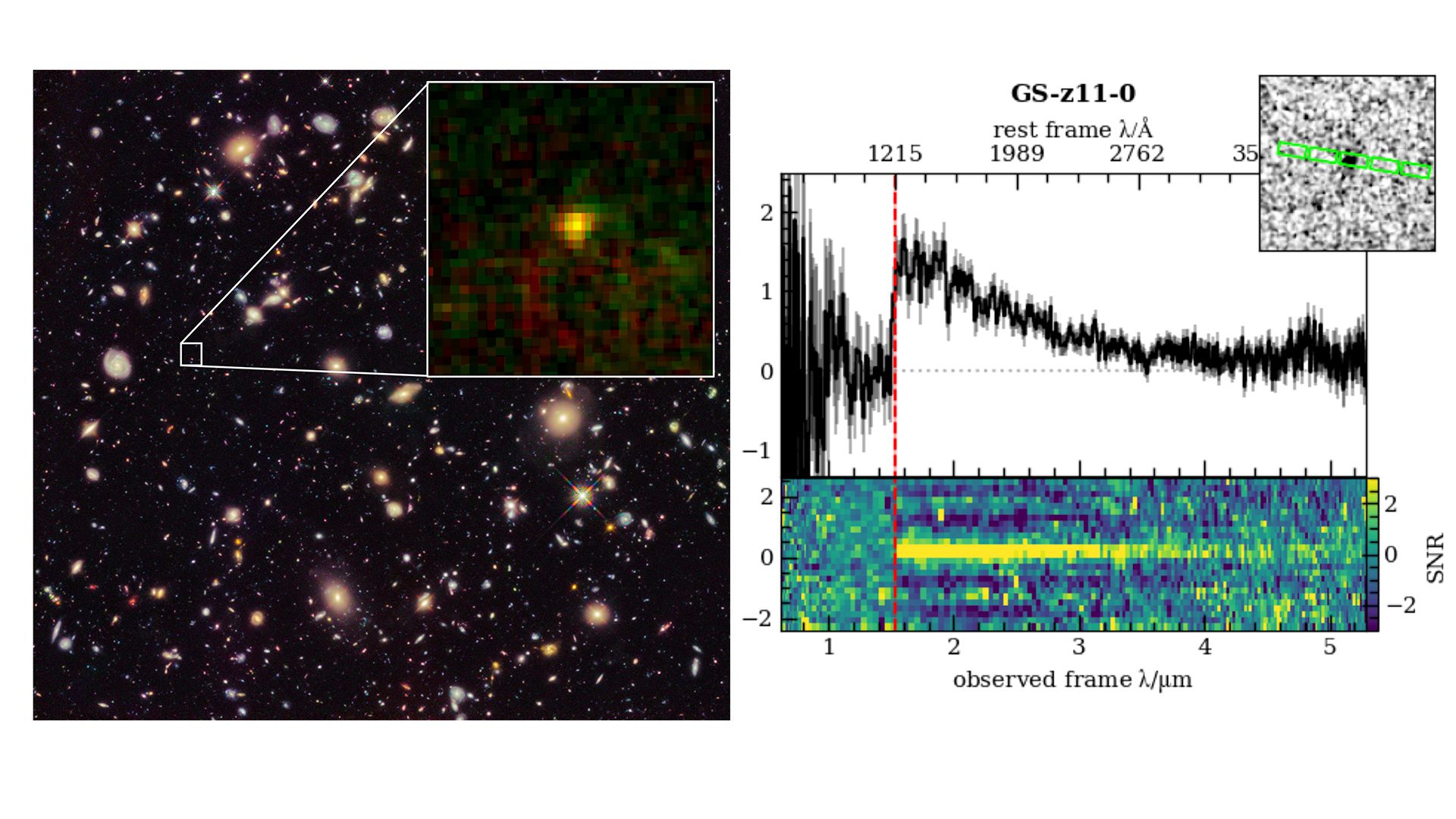In search of ‘cosmic dawn’
As NASA shares the first images from the James Webb Space Telescope, Professor Richard Ellis takes us on a journey through space and time to the early universe and never-been-seen-before galaxies
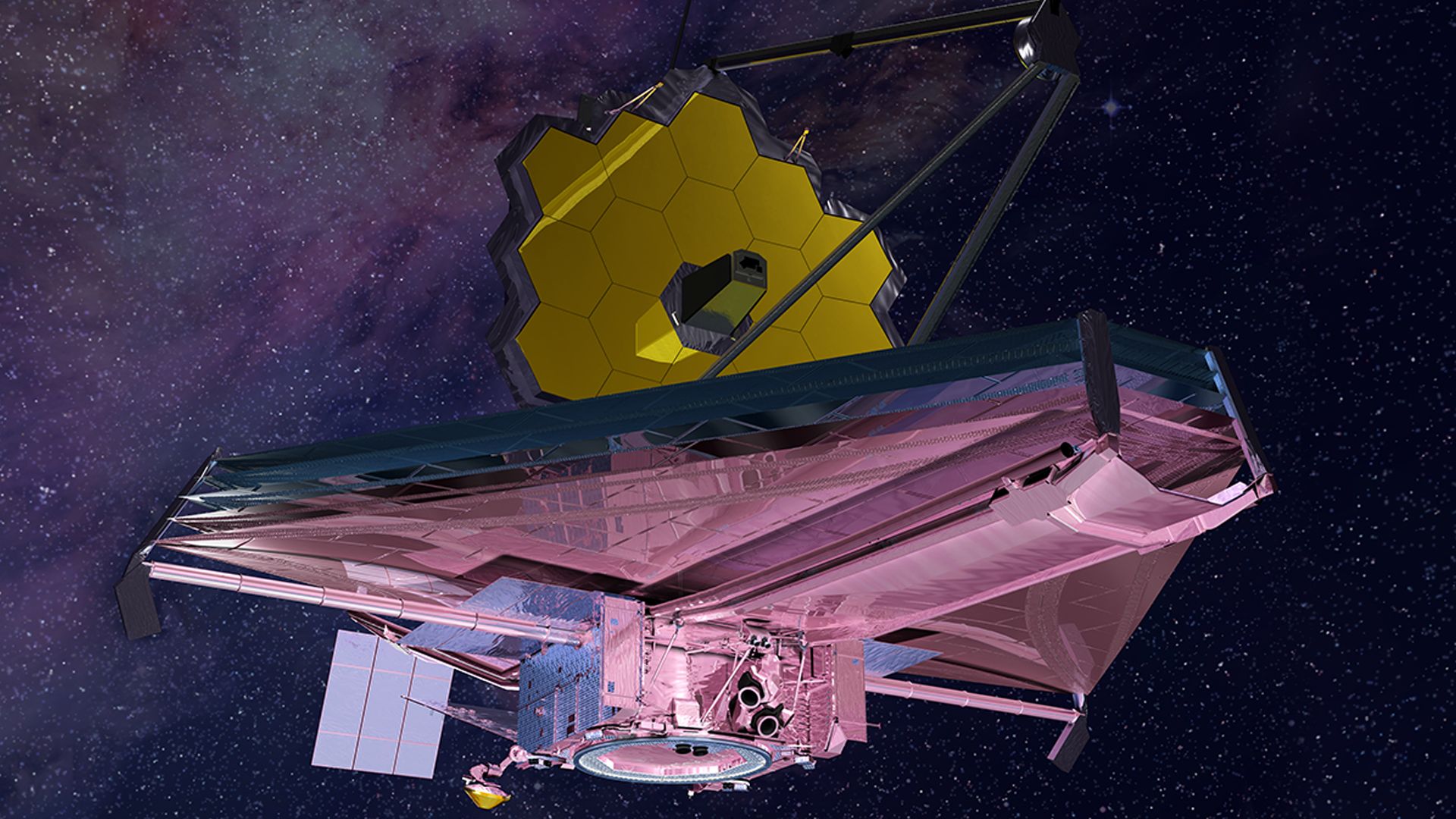
In 1996, a team of scientists including myself began planning the largest telescope ever to be sent into space. The mission of the James Webb Space Telescope (JWST) would be twofold: to search for Earth-like planets, known as exoplanets, around nearby stars, and to attempt to look back to cosmic dawn, when the first galaxies emerged from darkness. It is a lifelong dream of mine to witness that moment.
On reflection
In astronomy, we measure the power of a telescope by the size of its mirror, because it is the mirror that gathers the light. JWST’s predecessor, the Hubble Space Telescope, has a 2.5-metre mirror. JWST’s mirror is not only much bigger at 6.5 metres, but it also looks beyond the optical to mid-infrared wavelengths, making it sensitive to light that is far away, when the universe was very young. Launched on Christmas Day 2021, JWST is now orbiting the sun, 1.5 million kilometres from Earth, offering an unrivalled view of space beyond what any of us imagined was possible.
My research interest using JWST is trying to understand where we came from. When galaxies are born, the stars within them are initially chemically pristine. Most of the chemical elements that are around us today were synthesised in stars. Carbon, oxygen and all the atoms that we see in everyday materials were not present at the beginning of the universe. They required the nuclear reactions that occurred in stars. What we are doing is tracing back this chemical evolution to the very beginning, when the stars did not have all of these elements.
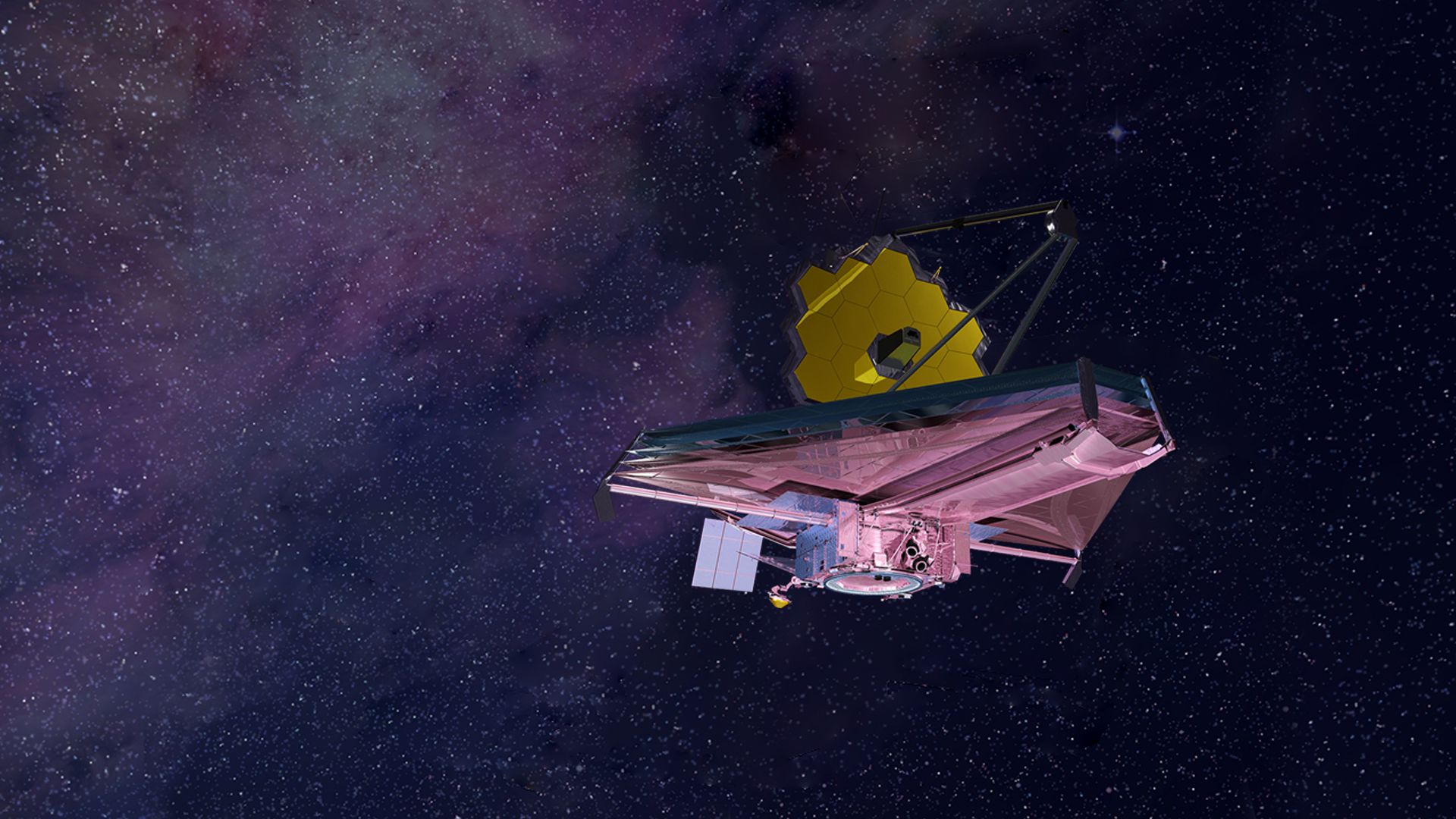
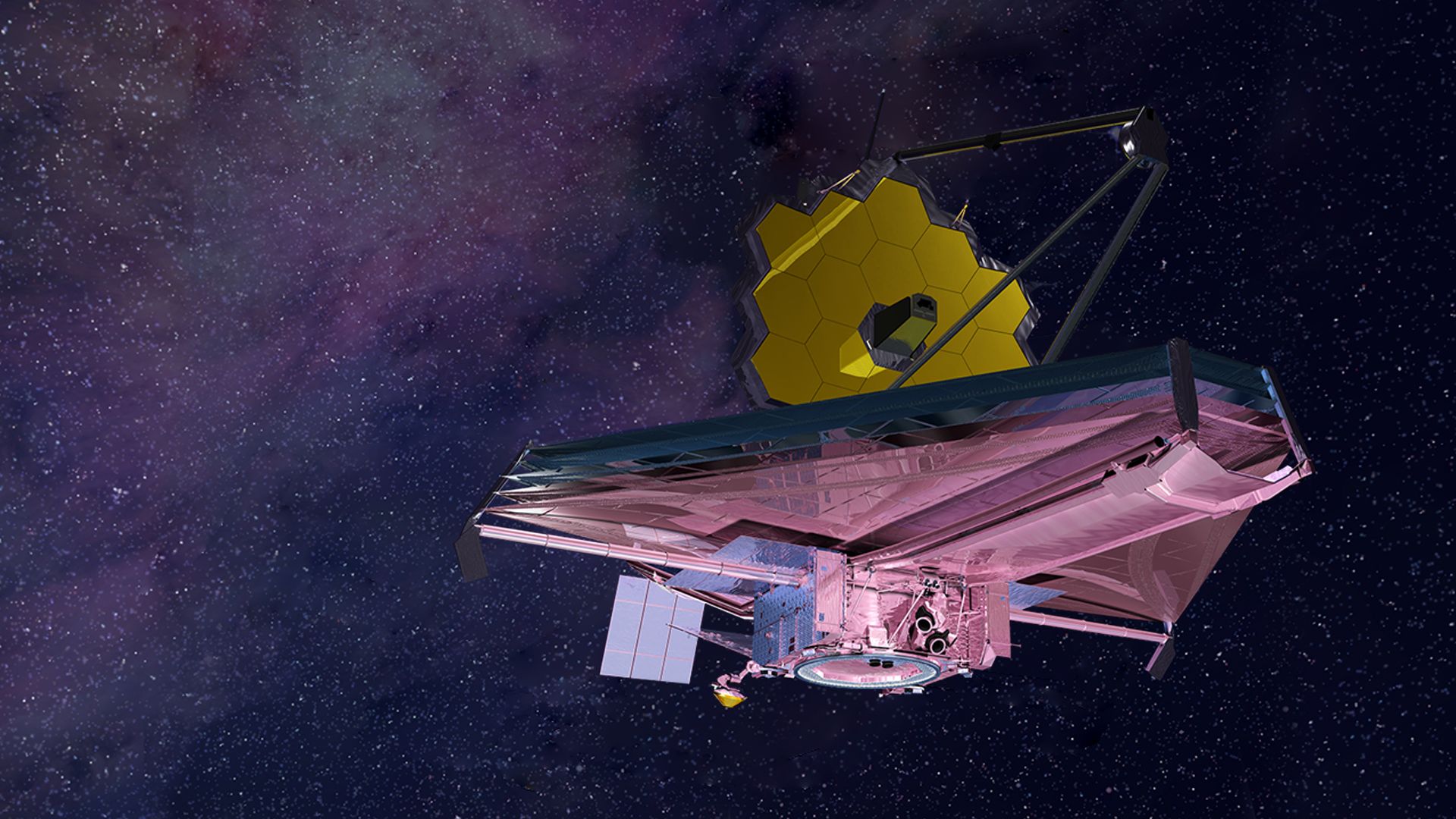

In 1996, a team of scientists including myself began planning the largest telescope ever to be sent into space. The mission of the James Webb Space Telescope (JWST) would be twofold: to search for Earth-like planets, known as exoplanets, around nearby stars, and to attempt to look back to cosmic dawn, when the first galaxies emerged from darkness. It is a lifelong dream of mine to witness that moment.
On reflection
In astronomy, we measure the power of a telescope by the size of its mirror, because it is the mirror that gathers the light. JWST’s predecessor, the Hubble Space Telescope, has a 2.5-metre mirror. JWST’s mirror is not only much bigger at 6.5 metres, but it also looks beyond the optical to mid-infrared wavelengths, making it sensitive to light that is far away, when the universe was very young. Launched on Christmas Day 2021, JWST is now orbiting the sun, 1.5 million kilometres from Earth, offering an unrivalled view of space beyond what any of us imagined was possible.
My research interest using JWST is trying to understand where we came from. When galaxies are born, the stars within them are initially chemically pristine. Most of the chemical elements that are around us today were synthesised in stars. Carbon, oxygen and all the atoms that we see in everyday materials were not present at the beginning of the universe. They required the nuclear reactions that occurred in stars. What we are doing is tracing back this chemical evolution to the very beginning, when the stars did not have all of these elements.

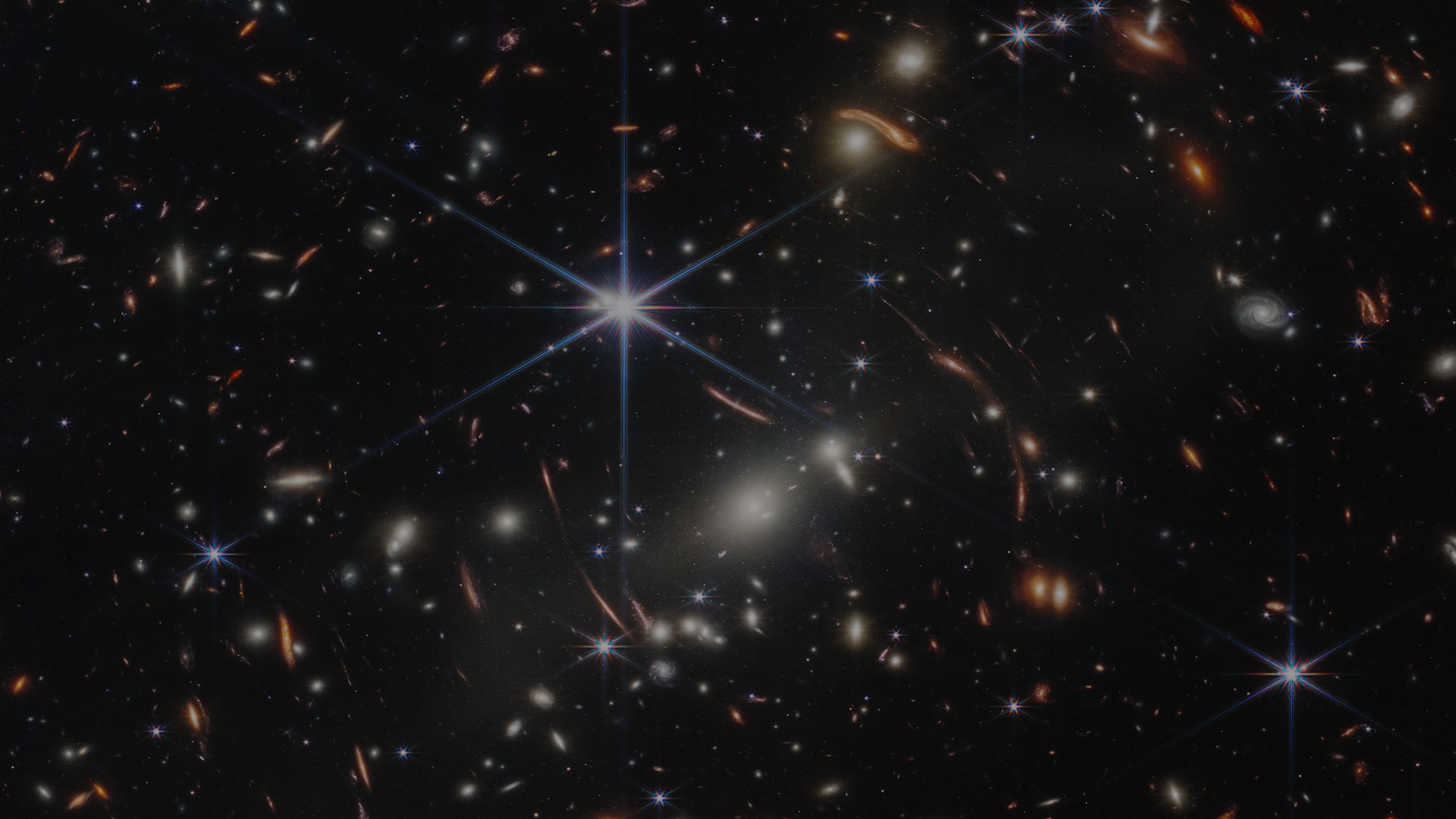
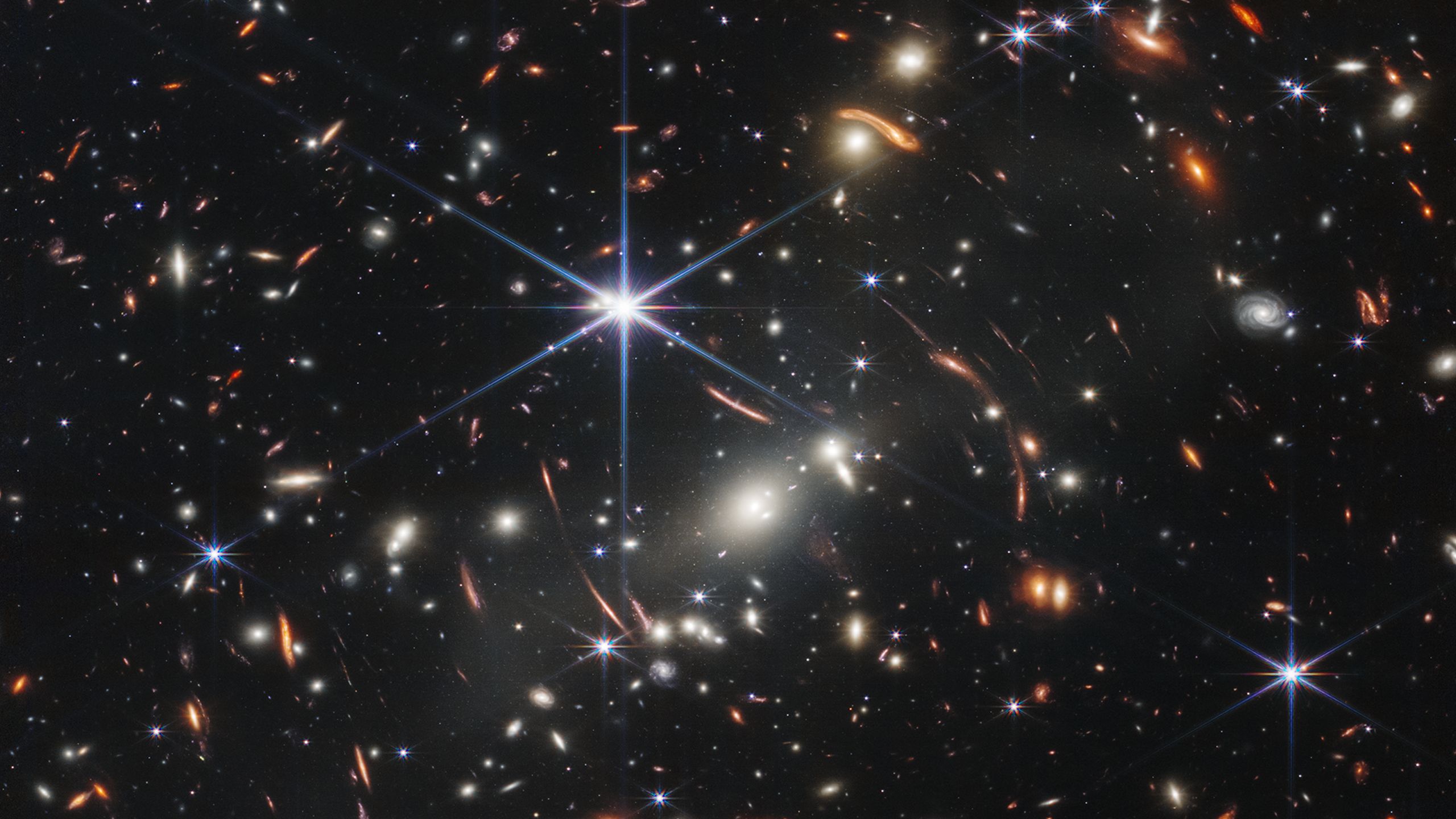
Seeing red
The ‘Joe Biden Deep Field’ (of galaxy cluster SMACS 0723) was the first image that NASA released to demonstrate what the US$10 billion JWST can achieve. The image shows a cluster of galaxies (the white objects) that are all at the same distance, around four billion light years away.
The gigantic star in the Milky Way is taking pride of place in the picture, but that is not particularly interesting. What is exciting about this image is all the strangely distorted and elongated red objects.
These are galaxies much, much further away in the background, whose light has been distorted as it passes through the nearer white galaxy clusters. It is a phenomenon called gravitational lensing, predicted by Einstein, whereby light is bent and focused by massive objects, and the associated magnification of this process enables us to see further back in time.
Going deeper
A comparison of the infrared capabilities of JWST, mid-infrared (left) and near-infrared (right). Images: NASA
A comparison of the infrared capabilities of JWST, mid-infrared (left) and near-infrared (right). Images: NASA
A side-by-side comparison of JWST’s mid-infrared (left) and near-infrared (right) imaging dramatically demonstrates the differences in what can be seen with this technology. Firstly, the exquisite improvement in the resolution of the picture – what astronomers call the visual acuity. Secondly, the extra depth of this image is just overwhelming, with thousands more objects as far as the eye can see – and crucially, that have never been seen before.
Looking back
JWST is equipped with spectrographs that, by identifying emission lines of hydrogen and oxygen, can reveal the redshifts and hence the 'lookback times' to distant galaxies. Image: NASA
JWST is equipped with spectrographs that, by identifying emission lines of hydrogen and oxygen, can reveal the redshifts and hence the 'lookback times' to distant galaxies. Image: NASA
The red objects in the Joe Biden Deep Field have variations in the strength and colour of light they emit, called spectra. On board JWST are spectrographs that can analyse these spectra to determine the object’s chemical characteristics and how far away it is.
For example, the spectrographs can determine hydrogen and oxygen lines that are at different places for the different galaxies, ‘redshifted’ by the expansion of the universe, and telling us that we are seeing each one at a different period in cosmic history.
Since scientific operations began in July 2022, JWST has sighted young galaxies seen 13.5 billion years ago, which is not far off the assumed birth of the universe around 13.8 billion years ago. We are getting closer.
Elements of surprise
Spectroscopy also enables JWST to measure the chemical composition of the gas in distant galaxies. Image: NASA
Spectroscopy also enables JWST to measure the chemical composition of the gas in distant galaxies. Image: NASA
Analysis of the composition of this very early galaxy still shows elements that make up all of us – oxygen, neon and so on – but as we go further back, we would expect these elements to get weaker to the point that when we finally reach the holy grail of cosmic dawn, the spectrograph would only pick up hydrogen and maybe a little helium, as only those elements were produced in the Big Bang. JWST is opening up a new horizon for us in astronomy: we are seeing these chemical lines as signatures or fingerprints of what the stars look like in this galaxy for the very first time.
Already, there is evidence emerging from JWST that there is something different in the galaxies beyond the horizon that we could see with Hubble. Star formation seems to be much more dramatic, luminous and efficient. We do not know why yet, but it is telling us that we are approaching a new era in cosmic history where something very special is happening.
It may be that the earliest stars have far fewer chemical elements than the ones we see around us today. Or it may be that the galaxies consist of stars that are much more luminous and massive than we see in the Milky Way, which would be another indication that we are very close to witnessing the key moment of cosmic dawn.
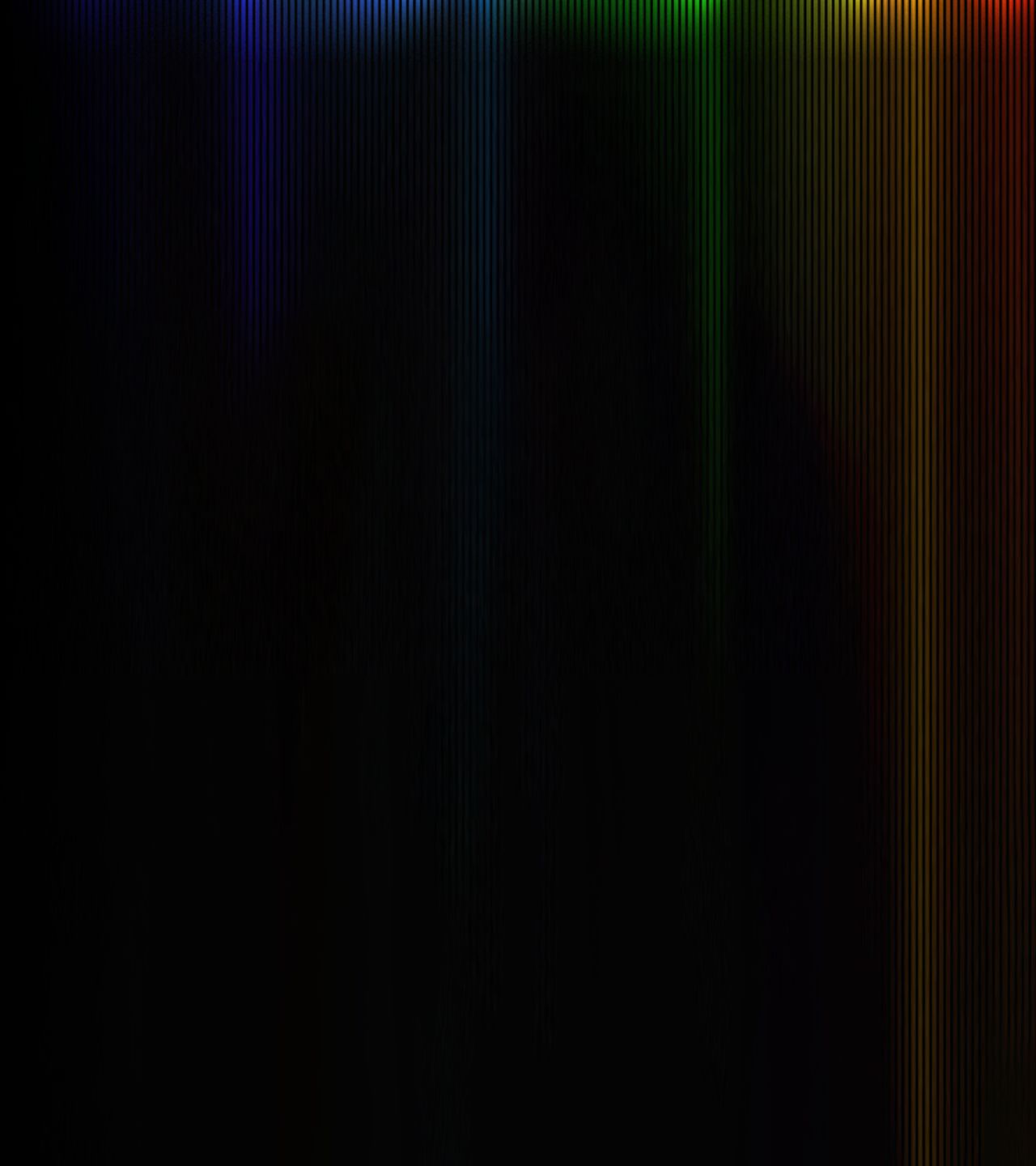
Going deeper
A comparison of the infrared capabilities of JWST, mid-infrared (left) and near-infrared (right). Images: NASA
A comparison of the infrared capabilities of JWST, mid-infrared (left) and near-infrared (right). Images: NASA
A side-by-side comparison of JWST’s mid-infrared (left) and near-infrared (right) imaging dramatically demonstrates the differences in what can be seen with this technology. Firstly, the exquisite improvement in the resolution of the picture – what astronomers call the visual acuity. Secondly, the extra depth of this image is just overwhelming, with thousands more objects as far as the eye can see – and crucially, that have never been seen before.
Looking back
JWST is equipped with spectrographs that, by identifying emission lines of hydrogen and oxygen, can reveal the redshifts and hence the 'lookback times' to distant galaxies. Image: NASA
JWST is equipped with spectrographs that, by identifying emission lines of hydrogen and oxygen, can reveal the redshifts and hence the 'lookback times' to distant galaxies. Image: NASA
The red objects in the Joe Biden Deep Field have variations in the strength and colour of light they emit, called spectra. On board JWST are spectrographs that can analyse these spectra to determine the object’s chemical characteristics and how far away it is.
For example, the spectrographs can determine hydrogen and oxygen lines that are at different places for the different galaxies, ‘redshifted’ by the expansion of the universe, and telling us that we are seeing each one at a different period in cosmic history.
Since scientific operations began in July 2022, JWST has sighted galaxies that are 13.5 billion years old, which is not far off the assumed birth of the universe around 13.8 billion years ago. We are getting closer.
Elements of surprise
Spectroscopy also enables JWST to measure the chemical composition of the gas in distant galaxies. Image: NASA
Spectroscopy also enables JWST to measure the chemical composition of the gas in distant galaxies. Image: NASA
Analysis of the composition of this very early galaxy still shows elements that make up all of us – oxygen, neon and so on – but as we go further back, we would expect these elements to get weaker to the point that when we finally reach the holy grail of cosmic dawn, the spectrograph would only pick up hydrogen and maybe a little helium, as only those elements were produced in the Big Bang. JWST is opening up a new horizon for us in astronomy: we are seeing these chemical lines as signatures or fingerprints of what the stars look like in this galaxy for the very first time.
Already, there is evidence emerging from JWST that there is something different in the galaxies beyond the horizon that we could see with Hubble. Star formation seems to be much more dramatic, luminous and efficient. We do not know why yet, but it is telling us that we are approaching a new era in cosmic history where something very special is happening.
It may be that the earliest stars have far fewer chemical elements than the ones we see around us today. Or it may be that the galaxies consist of stars that are much more luminous and massive than we see in the Milky Way, which would be another indication that we are very close to witnessing the key moment of cosmic dawn.
Stretching time
The immense power of JWST, combined with the magnifying power of gravitational lensing, means that it can also study distant galaxies in much greater detail.
The little yellow dotted ellipses in this image form a stretched arc that shows one galaxy that is being magnified by factors of 100 or more in one dimension. It is like if I held a magnifying glass in front of my eye and I looked at a light and could see it magnified. What we see here is the same basic idea – that there is a galaxy far away, and in this particular location, a nearer galaxy cluster stretches this galaxy’s image by an enormous factor so that we not only see the galaxy stretched, but we start to see the individual star clusters within it.
New research proposes that the object marked Earendel may be an individual star, magnified by a factor of 1,000 or more, that is 12 billion light years away. I have been working on ideas around gravitational lensing since the 1980s, but I never thought that we would be able to resolve individual stars in galaxies to these gigantic distances.
Image courtesy of Eros Vanzella.
Stretching time
The immense power of JWST, combined with the magnifying power of gravitational lensing, means that it can also study distant galaxies in much greater detail.
The little yellow dotted ellipses in this image form a stretched arc that shows one galaxy that is being magnified by factors of 100 or more in one dimension. It is like if I held a magnifying glass in front of my eye and I looked at a light and could see it magnified. What we see here is the same basic idea – that there is a galaxy far away, and in this particular location, a nearer galaxy cluster stretches this galaxy’s image by an enormous factor so that we not only see the galaxy stretched, but we start to see the individual star clusters within it.
New research proposes that the object marked Earendel may be an individual star, magnified by a factor of 1,000 or more, that is 12 billion light years away. I have been working on ideas around gravitational lensing since the 1980s, but I never thought that we would be able to resolve individual stars in galaxies to these gigantic distances.
In 2013, using Hubble, my team located a possible galaxy, GS-z11-0, at a redshift 11.9, seen less than 400 million years after the Big Bang. The inset on the left shows the galaxy as viewed by JWST/NASA. A recent spectrum taken with JWST (right) has now confirmed this to be the most distant galaxy seen prior to JWST. Images: Emma Curtis-Lake
In 2013, using Hubble, my team located a possible galaxy, GS-z11-0, at a redshift 11.9, seen less than 400 million years after the Big Bang. The inset on the left shows the galaxy as viewed by JWST/NASA. A recent spectrum taken with JWST (right) has now confirmed this to be the most distant galaxy seen prior to JWST. Images: Emma Curtis-Lake
The space race
Since the first images from JWST landed in NASA’s data archive, nearly 50 papers have been posted on the internet, with everybody trying to see the first galaxies beyond what had been detected with Hubble. However, the only foolproof way to estimate the distance, and hence the lookback time to these galaxies, is via the spectra.
This is one of the first published spectra of four galaxies beyond Hubble’s horizon. It is a galaxy that I first detected with Hubble back in 2013, but back then, we did not believe that Hubble’s data was good enough for us to be 100% sure. You can imagine how immensely satisfying it was that one of JWST’s first deep spectroscopic exposures completely vindicated our earlier work. Not only that, but a further three new galaxies have also been confirmed.
While NASA makes most data and images from JWST publicly available, it also holds competitions for observing time. The people who built the instruments on board get ‘guaranteed time’, essentially a reward for all the hard work over two decades that they contributed to the community in building the instruments. That data is under wraps. The rest of us must submit proposals and it is rather like a rat race, as everyone wants to get to the exciting scientific results first.
At UCL, we applied for observing time through the guest observer programs; I personally got 200 hours of JWST time and that data is rolling in now. However, JWST has enough fuel on board for between 10 and 15 years, which means that there will be a huge amount of data to work through for years to come. We are applying for the next cycle now.
Sociologically, it is a very interesting time in astronomy, because when I started in this field, there was a professor in the laboratory with a student and maybe a post-doc, and the three of them would fly to the Canary Islands, go up a mountain and get three nights at the telescope there, bringing the data back home on a magnetic tape! Now, there are teams of a hundred astronomers, downloading data and competing to be the first to decipher it and to reveal our cosmic dawn to the world.
Richard Ellis is Professor of Astrophysics, Department of Physics & Astronomy. His new book, ‘When Galaxies Were Born: The Quest for Cosmic Dawn’ is published by Princeton University Press.
Title image: A compilation of pictures captured by the Hubble Telescope and JWST of the heart of Messier 74, the so-called Phantom Galaxy, revealing filaments of gas and dust in its majestic spiral arms. The absence of gas in the centre enables a clear view of a star cluster. Images: ESA and PHANGS
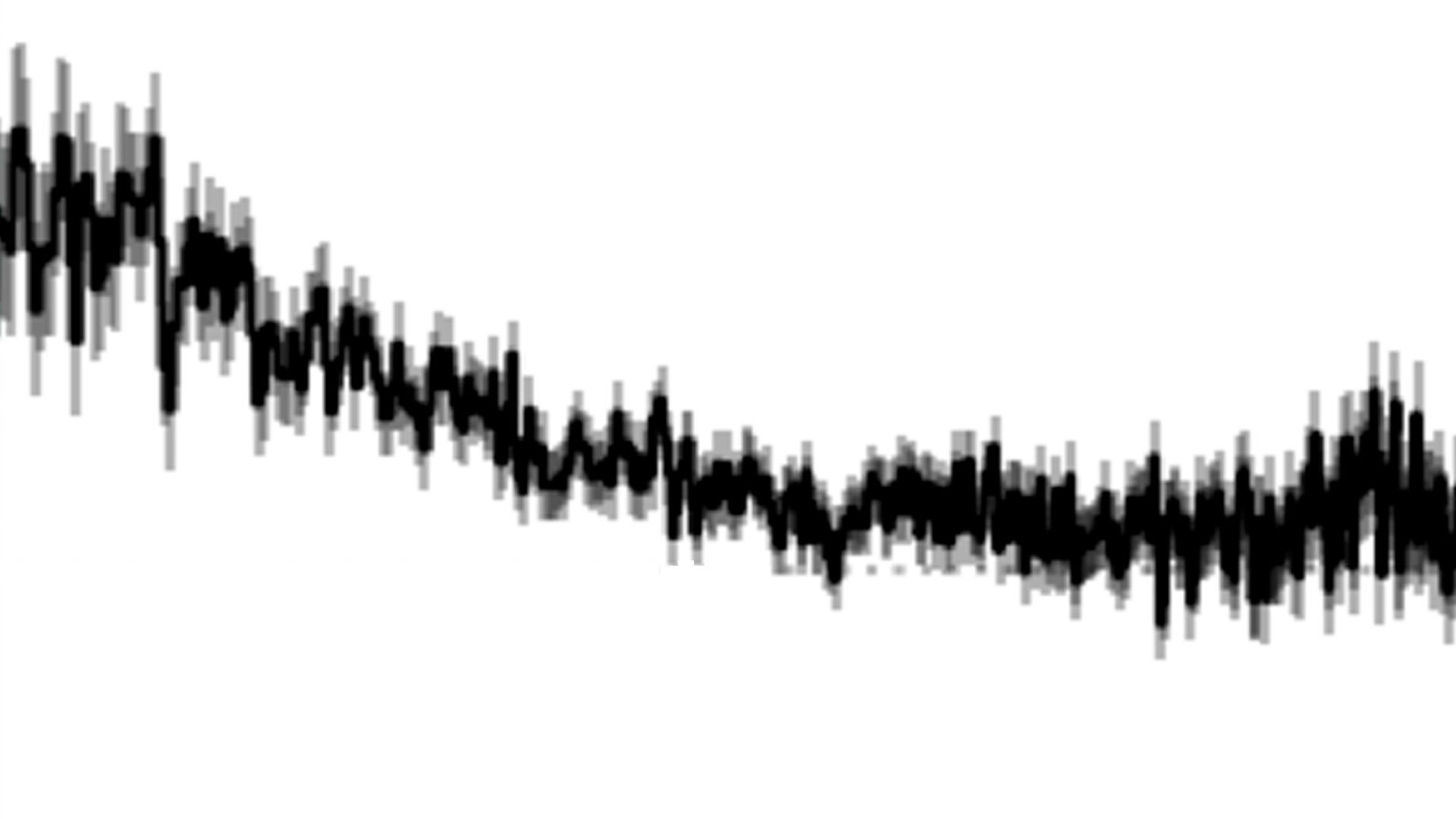
In 2013, using Hubble, my team located a possible galaxy, GS-z11-0, at a redshift 11.9, seen less than 400 million years after the Big Bang. The inset on the left shows the galaxy as viewed by JWST/NASA. A recent spectrum taken with JWST (right) has now confirmed this to be the most distant galaxy seen prior to JWST. Images: Emma Curtis-Lake
In 2013, using Hubble, my team located a possible galaxy, GS-z11-0, at a redshift 11.9, seen less than 400 million years after the Big Bang. The inset on the left shows the galaxy as viewed by JWST/NASA. A recent spectrum taken with JWST (right) has now confirmed this to be the most distant galaxy seen prior to JWST. Images: Emma Curtis-Lake
The space race
Since the first images from JWST landed in NASA’s data archive, nearly 50 papers have been posted on the internet, with everybody trying to see the first galaxies beyond what had been detected with Hubble. However, the only foolproof way to estimate the distance, and hence the lookback time to these galaxies, is via the spectra.
This is one of the first published spectra of four galaxies beyond Hubble’s horizon. It is a galaxy that I first detected with Hubble back in 2013, but back then, we did not believe that Hubble’s data was good enough for us to be 100% sure. You can imagine how immensely satisfying it was that one of JWST’s first deep spectroscopic exposures completely vindicated our earlier work. Not only that, but a further three new galaxies have also been confirmed.
While NASA makes most data and images from JWST publicly available, it also holds competitions for observing time. The people who built the instruments on board get ‘guaranteed time’, essentially a reward for all the hard work over two decades that they contributed to the community in building the instruments. That data is under wraps. The rest of us must submit proposals and it is rather like a rat race, as everyone wants to get to the exciting scientific results first.
At UCL, we applied for observing time through the guest observer programs; I personally got 200 hours of JWST time and that data is rolling in now. However, JWST has enough fuel on board for between 10 and 15 years, which means that there will be a huge amount of data to work through for years to come. We are applying for the next cycle now.
Sociologically, it is a very interesting time in astronomy, because when I started in this field, there was a professor in the laboratory with a student and maybe a post-doc, and the three of them would fly to the Canary Islands, go up a mountain and get three nights at the telescope there, bringing the data back home on a magnetic tape! Now, there are teams of a hundred astronomers, downloading data and competing to be the first to decipher it and to reveal our cosmic dawn to the world.
Richard Ellis is Professor of Astrophysics, Department of Physics & Astronomy. His new book, When Galaxies Were Born: The Quest for Cosmic Dawn, is published by Princeton University Press.
Title image: A compilation of pictures captured by the Hubble Telescope and JWST of the heart of Messier 74, the so-called Phantom Galaxy, revealing filaments of gas and dust in its majestic spiral arms. The absence of gas in the centre enables a clear view of a star cluster. Images: ESA and PHANGS



